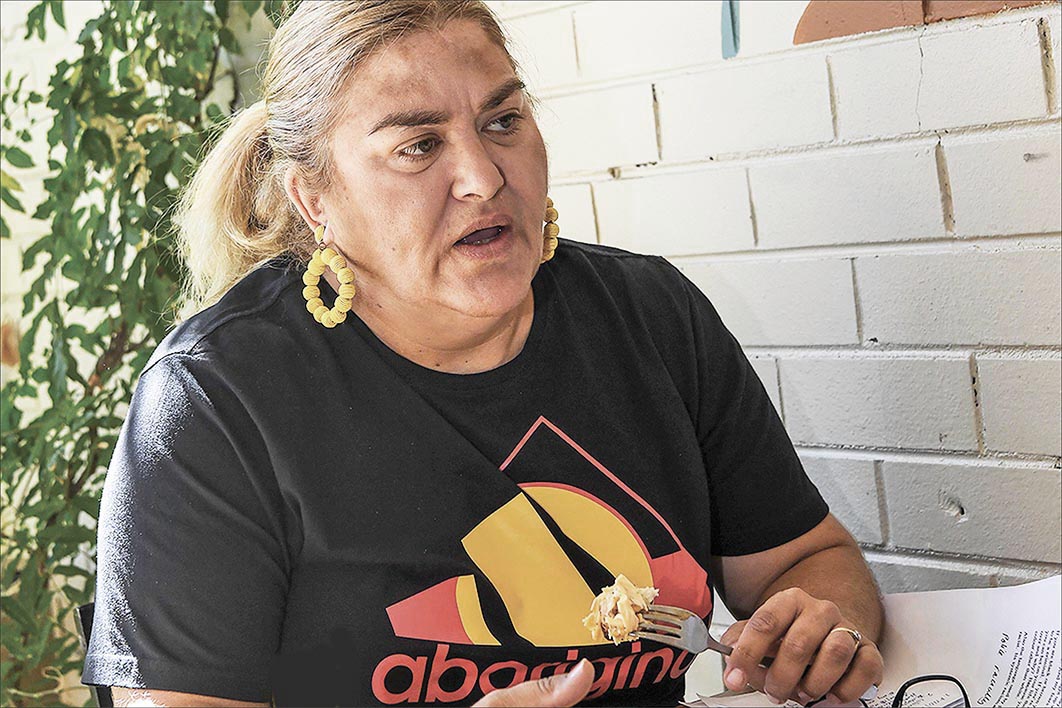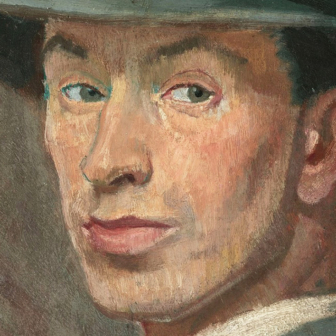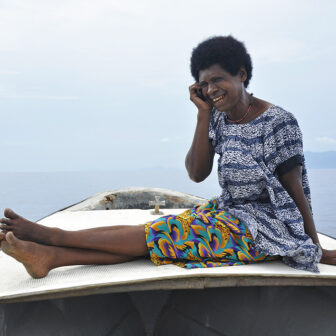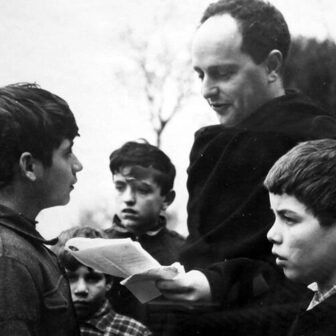Black and Blue
By Veronica Gorrie | Scribe | $32.99 | 256 pages
“In 2017, University of Queensland professor Tamara Walsh obtained data showing about one in four of all adults and more than 40 per cent of children charged with public nuisance were Indigenous.”
— Michael McGowan and Christopher Knaus, “‘Essentially a Cover-up’: Why It’s So Hard to Measure the Over-Policing of Indigenous Australians,” Guardian, 13 June 2020
1.
When a marginalised person writes, it is not art.
When a marginalised person writes, it is ethnography.
When a marginalised person writes, it is “truth-telling.” It is “bearing witness.”
When a marginalised person writes, their writing is asked to bear a load it cannot see or witness: its invalidation as art.
2.
Veronica Gorrie writes as a firsthand observer.
In the police force, the firsthand observer, the witness, is known as the informant (as in an informant’s statement). This is their individual narrative — their experience of an event.
The more firsthand this account, the more credible it will be as evidence.
3.
During her time in the police force, Gorrie writes, police officers would monitor each other. “It is common knowledge within the job that police do unauthorised checks on people: their neighbours, their mates, their family, and even each other. One time when I was in the watchhouse, and there was nobody in the cells or pods, one of my mates was placing bets on who had the cleanest traffic record. There were about five of us, and he ran all our names through the system.”
4.
Surveillance extends outward from the self, toward one’s family and friends — and then back, eventually, to the individual cop.
5.
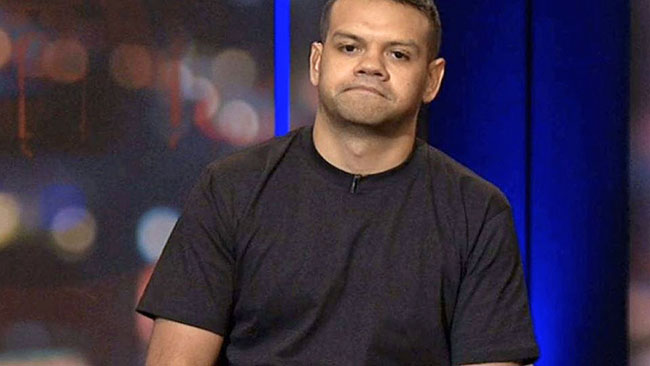
Meyne Wyatt, actor, on ABC TV’s Q&A.
Taking on the role of informant creates a bind. If the Aboriginal author is always the lone witness — Adam Goodes, “I heard what I heard”; Shareena Clanton, “my experience on Neighbours”; Meyne Wyatt, Veronica Gorrie, the this I believe to be true — what then?
Then they are always able to be disbelieved.
Maybe it never happened.
Maybe it was one bad experience.
6.
We like a yarn in Australia. Especially a yarn that speaks to us.
Where does that put those yarns that are always bearing witness and truth-telling? That are ethnographic, or anthropological, or political?
The margins are full of exotic voices that can be ignored: that’s why we call them “margins.” They are “voices,” things “we should hear.” They are “necessary” or “urgent.” They are urgent because nothing ever changes. There is no completion. Their universality, if granted, is given only in terms of generalised anonymity: world music, world literature.
They are not art. They are not writers. They are not neutral, much less universal.
They are ignorable.
7.
Even if the witness joins others, makes a show of solidarity, they can always be atomised and set apart from each other: another lone voice. Another representative.
Poor bugger them.
8.
Prison abolition. The idea that prisons should not exist. Because we have material desires: for safety, for life, for time and space. And the carceral system is dead time, dead space. It is not regenerative. The reasons for why harm occurs are never understood or investigated.
I do not believe that every victim needs or wants “healing” or “understanding.” Some may.
But the carceral system is a circle of harmful effects — it feeds on harm, it causes harm and, in the end, it does little to reduce harm.
9.
As I write, I listen to KRS-One. The officer of KRS-One’s lyrics — officerofficerofficer, the one who holds office, the person in charge, who is charged with oversight — transforms into the overseer: the person who deserves, demands, special pleading.
Life giver, life taker.
Overseeroverseeroverseer.
10.
In The Fire Next Time (1963), James Baldwin writes: “I might have pitied [the police] if I had not found myself in their hands so often and discovered, through ugly experience, what they were like when they held power and what they were like when you held the power.”
11.
Late in Black and Blue, Veronica Gorrie describes, two years into her time as an officer, a new policy of random breath tests for police. “Have a guess,” she says, “who was the first cop that had their breath tested for alcohol? Yep, me — not so random after all. Not only do police racially profile their arrests, it became evident that they also racially profile minority police officers — black cops.”
12.
The question of abolition, of an end to policing, is intersectional. The police are often first responders. Having responded, they find themselves criminalising people. Lifting the vulnerable up, up the justice chain.
13.
Contemporary Australian policing has its origins (and note the progenitive noun) in the paternalism underpinning colonisation. It picked up where the “Irish Model” left off. A sequel to a film set in that colony during the nineteenth century. No need for Officer Friendly or Constable Care when your raison d’être is suppressing dissent.
And so the police were placed in military-style barracks, set against the community, under a highly centralised and hierarchical chain of command.
14.
Chris Owen’s historical study of policing in the Kimberley region of Western Australia, Every Mother’s Son Is Guilty, shows how police attitudes towards First Nations were premised on two simple, ongoing, axioms: that they were inferior to whites, and that they were, a priori, criminal.
15.
Are Aboriginal cells simply DNA or are they passed down over generations — like prisons, like cells?
16.
There is not a single era in United States history in which the police were not a force of violence against black people. Policing in the South emerged from the slave patrols in the 1700 and 1800s that caught and returned runaway slaves. In the North, the first municipal police departments in the mid-1800s helped quash labor strikes and riots against the rich. Everywhere, they have suppressed marginalised populations to protect the status quo.
So when you see a police officer pressing his knee into a black man’s neck until he dies, that’s the logical result of policing in America. When a police officer brutalizes a black person, he is doing what he sees as his job.
— Mariame Kaba, “Yes, We Mean Literally Abolish the Police,” New York Times, 12 June 2020
17.
Dear Mr Morrison, we have tried importing our issues from overseas, but we cannot improve on the homegrown product. We would only be importing variants of local brands. Since invasion, First Nations who disobeyed the laws of the mission and colonial overseer have been criminalised. The missions showed little appreciation of First Nations’ lore and protocol; and so the prisons quickly filled with mob, and the bad relationship between cops and Blacks, its intergenerational institutionalisation — well, we live with that today.
18.
Much of what Gorrie describes in her day-to-day life as a police officer is not only routine but comically tedious. The banality is cruel, and banally so — officers running each other’s number plates, traffic patrols looking for any excuse to issue infringement notices. Once a month there is revenue raising. Quotas for roadside breath tests. The wizened Bruce Willis image of film and TV, cops doing the good work of catching the killer, stopping the heist, accounts for little of police business. Gorrie recounts being broke — too broke to pay bills, to buy her children Christmas presents, to pay rent — and then being tasked with serving notices of eviction. She might, in another life, have been served or pulled over by someone much like herself, were she not now sitting in the cop car. Tenants’ possessions are placed in storage (few having left their properties within the fourteen-day notice period) and tenants foot the bill. Unpaid bills result in goods being sold and the profit passed on to the landlord — and how many who cannot afford rent suddenly discover that they can afford transport and storage costs? “Basically, I was kicking people out,” Gorrie notes.
19.
“My house, my rules”: sounds like your parents, doesn’t it? Policing as paternal frontline — with First Nations cast as children. Surrogate mum and dad, perennial overseers, police were psychologically primed for frontier expeditions, pastoral land grabs, and the breaking up of Aboriginal families.
A land grab is not directly comparable to taking someone’s house — but nor is the through-line impossible to recognise.
20.
Police today still play a role in removing First Nations children from families. The Family Is Culture report in 2019 noted significant concerns about the use of police during removals, saying: “When police are used for removal, especially riot police, this has historical continuity.”
21.
I received a job to attend an address to conduct a welfare check on three young children who were in the care of their mother. The job had been placed by the Department of Families (now the Child Safety Department), which had received complaints of neglect, and wanted welfare to check on the kids. Apparently, department social workers had been attending the address for weeks, but each time, the mother and children were not home. According to legislation, if the department is unable to conduct their assessment, then police are able to, and can remove children if deemed necessary…
The stolen generation. How ironic that during that bleak period, white people were removing black children, and here I was: a black police officer removing white children.
— Veronica Gorrie, Black and Blue
22.
I remember talking to a member of the force as a criminal defence lawyer; he told me that often those in community care were first to call the cops out. There is a reliance on police to do everything — including many things they are neither prepared nor qualified to do.
23.
There is much police are not equipped to do, Gorrie suggests. Like responding to the cops that break and enter into their head, patrolling their thoughts after-hours. Gorrie describes a “downhill spiral,” the fear of becoming like “the ones that flash their badges when they are off duty, on their own little power trips.” She tells of a female cop who, out walking at a park, sees a man approach her with two unleashed dogs. The cop lectures him about the rules of the park, threatening to act if he does not leash the dogs.
“The man identified himself as an inspector — technically, her superior. Not long after this, she was transferred out of the district.”
24.

The author outside the Tote Hotel, Collingwood, June 2020.
I got a cop in my head and he stay on the beat
On duty 24 hours every day of the week
And when he blow his little whistle, I restrict myself
And when I’m walking in New York, I stop and frisk myself
And when it’s time to make arrests, I don’t resist myself
Cos if I saw me in a line-up, I might pick myself
— Open Mike Eagle, “Police Myself”
25.
During a rotation in the traffic branch, Gorrie intercepts a vehicle for failing to stop at a stop sign. The driver is rushing to hospital. His brother is dying.
“Instead of being empathetic towards the driver and letting him off with a warning, I issued him an infringement notice.”
26.
Another memory (and isn’t this what memories are for — to haunt us, to remind us, until we can’t remember a time before them?): a sex worker — the only one Gorrie knew in her district — late twenties, addicted to heroin.
“I was working a shift with another female officer when I saw her standing on the corner. She was so affected by drugs that as we pulled up to the roundabout, she got in the back seat of the police vehicle and asked if we wanted her services.” Rather than assist, Gorrie issues her with a Notice to Appear in court.
“Shortly after, she hung herself in the garage of a friend’s place she was staying at. I’ve had to live with my actions ever since.”
27.
Since early colonisation police have been empowered to isolate and confine Aboriginal people on public health grounds. Historically, a diagnosis of syphilis or leprosy could be used (cop as qualified doctor); today, mental unwellness or inebriation are common justifications (cop as psychologist, as AA coach).
28.
After being diagnosed by policemen as having suspected venereal diseases people were rounded up, many placed in chains, and taken to the islands.
This was facilitated by the Aboriginal Act of 1905.
The islands’ facilities were inadequate, people had no contact with their families back home, and they were made to undergo experimental medical treatments.
Academics have said about 40 per cent of those confined never returned home.
— Karen Michelmore, “The ugly past of Australia’s ‘lock hospitals’ on Bernier and Dorre Islands slowly revealed,” ABC, 19 December 2018
Then, many taken to lock-up hospitals for “venereal disease” never made it home.
Now, many taken to lock-ups for suspected inebriation will never make it home.
29.
Finally, the few material traces of that past are slowly erased, and the future remnants will no longer carry the stamp of the colonized group. The few statues which decorate the city represent (with incredible scorn for the colonized who pass by them every day) the great deeds of colonization. The buildings are patterned after the colonizer’s own favorite designs; the same is true of the street names, which recall the faraway provinces from which he came.
— Albert Memmi, The Colonizer and the Colonized
30.
The WA government has said it is the first in Australia to acknowledge the history of lock-up hospitals. It is funding a statue to be built near One Mile Jetty in Carnarvon, where people were loaded onto boats bound for the islands.
31.
Q&A with Veronica Gorrie, based on page 224 of Black and Blue.
Fry: Tell us about your experience of policing?
Gorrie: Policing fucked me up big time.
Fry: How?
Gorrie: I spent half my time in the job educating other cops about my culture, and the other half explaining the reasons I became a sworn police officer and not a police liaison officer. Not to mention the shit I put up with from other officers. You either conform to become one of them and allow yourself to be a part of the racist system and their racist ideologies about your own people, or you are in a constant battle, defending yourself.
Fry: What are things like now?
Gorrie: I knew a lot of cops didn’t like me because I’m Black, and truth be told, I didn’t like them either. The friends I did make during my time — well, I don’t have any contact with them anymore.
32.
All effectiveness and social dynamics, on the other hand, seem monopolized by the colonizer’s institutions. If the colonized needs help, it is to them that he applies. If he does something wrong, it is by them that he is punished.
— Albert Memmi, The Colonizer and the Colonized
33.
When I hear that we can build other ways of responding to harms in our society, that trained “community care workers” could do mental health checks if someone needs help, I wonder who would train them not to call the police, who will kill the cop in their head.
The same can be said for restorative justice as an alternative to prison — it’s useful, there could be more of it, but what about instances where restorative justice is inadequate? Where the victims don’t want restoration? Where even the abolitionists have lost their taste for it?
34.
Part of the answer, I think, lies in distinguishing the short- from the long-term. There are times when any one of us might turn to cops as part of an immediate need, say, to protect people from violence, or help those who are vulnerable. It is possible to do this work while remaining focused on a long-term goal of abolition; of working towards that point where people are able to feel safer not relying on the police to step in and tackle every conceivable form of conflict or distress. To reach a point where communities are equipped to resolve things.
35.
And yet, and yet… the criminalisation of misidentified victims of family violence, the growing ranks of gender nonconforming people in prisons, the criminalisation of Black, Indigenous, migrant, trans, homeless communities…
36.
Throughout her book Veronica Gorrie describes the second job she works alongside being a cop: caring for her children. They, in turn, care for her; she describes having her arm rubbed while talking to her oldest child about her day.
She worries if she is traumatising them.
37.
I wonder how much of the work of building alternatives to policing and incarceration — which is often care work, gendered work — is left to others to envision. Black and Blue is filled with the public-facing life-and-death action of policing. Yet there is something equally disturbing about the scene Gorrie describes of her child massaging her arm: the need to care for each other, to belong to each other. This ordinary emotional support Gorrie gives her children, and which they give to her, embodies something of the abolitionist ideal. It is this care that Gorrie comes to believe in after policing — while policing, even. It is the work that makes all other work possible: the interdependence, resilience and vulnerability she finds in her relationship with her family, her parents, her partner, her children.
38.
Both of Gorrie’s jobs are twenty-four hours a day, seven days a week: that of being a mother, and that of being a cop.
39.
Perhaps it is not just a matter of temporality, but practical considerations, and the question of alternatives: if someone is facing deportation or violence from their partner, what do they need? As a criminal lawyer, I was focused on the immediate, on what a person needed to reduce harm or to access safety. I have no doubt that Gorrie, as a cop, felt similarly bound. The contextual nature of the struggles and decisions involved in them raises the question of allyship with your own values: allyship as verb, as being about what we do and how we do it, not some static thing you leave hanging in the dresser, to be taken down and worn every once in a while.
Forget the static analysis and fixed categories that fossilise into rigid oppressed/ally categories. Not who is more oppressed, but how oppression — a relational and contextual thing — is always moving, manifesting throughout our lives in different ways. It is not a quantity or a stock, a zero-sum game (something to be lost or won, gained or shed). It is amorphous. Fluid. It involves questions of agency, and self-determination: what does that person need? Are there effective alternatives? We owe ethical, consensual relationships to everyone we know. In the moment, does the person in front of us need to engage with state apparatus in order to immediately reduce their risk of harm or to access safety? Perhaps some might feel that any reliance on the systems we inherit gives them power. That it helps to validate them. But there are choices to be made in the moment; and it is always possible that one choice, whatever its limitations, increases the possibility of freedom, an expansion in the horizon of alternatives. We should always ask: is this choice widening that horizon? Or is it incarceration and control in another guise?
40.
This is the freedom I have faith in. •
The publication of this article was supported by a grant from the Judith Neilson Institute for Journalism and Ideas.

